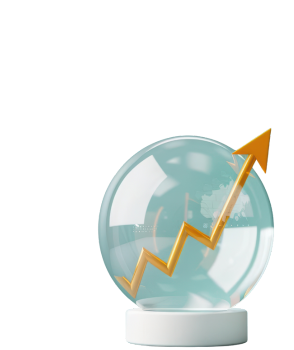In today’s fast-moving digital world, making decisions based on data isn’t just a nice-to-have—it’s a must. With AI and automation handling vast amounts of information at lightning speed, the real advantage comes from how businesses interpret and act on that data. According to a recent McKinsey report, companies using data-driven marketing are 23 times more likely to attract new customers and six times more likely to keep them compared to those relying on guesswork.
But simply having access to data isn’t enough. The real power lies in extracting meaningful insights, applying them in the real world, and constantly refining strategies to stay ahead.
In paid media, success goes beyond just tracking numbers - it’s about understanding consumer behaviour, anticipating trends, and making data-driven decisions that deliver real impact.
Why Data Analytics (and Behavioural Science) Are Game-Changers in Paid Media
With so much competition in the digital space, running ads without data-backed insights is like throwing darts in the dark. But knowing what people do isn’t enough - you need to understand why they do it. This is where behavioural science comes into play.
Behavioural science helps us decode the psychological triggers that drive actions, while data analytics gives us the proof of what’s working. When used together, they help marketers craft more persuasive, targeted, and effective ads.
#1 Behaviour-Based Targeting Leads to Higher Conversions
Every ad click, abandoned cart, and completed purchase tells a story. Instead of relying solely on demographics, data analytics allows marketers to segment audiences based on real behaviour and psychological triggers.
For example, loss aversion (the idea that people fear losing something more than they desire to gain something) is a powerful motivator. By using data to identify users who showed interest in a product but didn’t buy, marketers can create retargeting ads with messages like:
- “Hurry! Only 2 left at this price!”
- “Your exclusive offer expires in 2 hours—don’t miss out!”
Case Study: Work-From-Home vs. Generic Ad Messaging
To test the power of behaviour-driven messaging, at Reflect, we ran an A/B test comparing Work-From-Home ads with generic benefit-driven ads.
- The Work-From-Home ad leveraged emotional triggers and identity shifts, using phrases like “Say Goodbye to WFH Burnout” and “Home Office Fatigue? Join Us”, positioning coworking as a lifestyle upgrade rather than just a service.
- The Original ad took a more traditional approach, focusing on tangible perks like “Hot Desks & Free Yoga Classes” and “Affordable Desk Spaces”.
Key Results:
- The Work-From-Home ad’s CPC was 52.66% lower than the Original (£1.96 vs. £4.14), generating significantly more clicks for the same budget.
- The Work-From-Home ad’s CPA was 29.77% lower (£117.63 vs. £167.50), making it far more cost-effective per conversion.
- Both ads delivered the same number of conversions, but the Work-From-Home version achieved this at a much lower spend, proving that emotion-driven messaging outperforms feature-based ads in engagement and efficiency.
This case study highlights how behavioural psychology, paired with data analytics, leads to smarter targeting and better conversions.
#2 Real-Time Optimisation Keeps Campaigns Effective
Paid media moves fast. A campaign that performs well today might flop tomorrow due to competition, shifting trends, or ad fatigue. The good news? Data analytics provides real-time insights, so marketers can adjust on the fly. Say an ad’s click-through rate (CTR) is dropping. Instead of letting it waste budget, analytics tools can pinpoint what’s wrong—whether it’s an ineffective CTA, audience mismatch, or rising CPC (cost per click). With behavioural insights, marketers can tweak the messaging to reignite interest.
Example: If users are scrolling past the ad without engaging, they may need a curiosity gap:
- Boring: “Check out our latest offers on running shoes.”
- Engaging: “Runners are raving about these shoes - see why!”
By continuously testing, analysing, and refining ads based on behavioural patterns, marketers can ensure their campaigns remain cost-effective and impactful.
#3 Smarter Budget Allocation Means Less Waste, More ROI
Marketers don’t just need data—they need actionable insights that tell them where to invest more and where to pull back. Behavioural analytics helps answer critical questions like:
-
Which ads trigger impulse purchases?
- What messaging resonates with different audience segments?
- Which platforms (Google, Meta, TikTok) drive the highest intent users?
Instead of spreading budgets across multiple channels hoping for the best, marketers can allocate funds strategically based on where users are most likely to convert. For instance, if Meta Ads drive the highest engagement but Google Ads bring in the most sales, budget can be adjusted to maximise profitability. This reduces wasted ad spend and ensures every pound contributes to the campaign’s objectives.
How to Use Data Analytics & Behavioural Insights to Improve Paid Media Performance
Now that we’ve established why analytics and behavioural science matter, let’s explore how to apply them effectively.
#1 Focus on the Right Metrics
Not all data is useful. To track success, focus on key performance indicators (KPIs) that directly influence your goals.
-
Engagement Metrics - CTR, dwell time, and interactions tell you if an ad captures attention.
- Conversion Metrics - Conversion rate, cost per acquisition (CPA), and ROAS (return on ad spend) reveal profitability.
- Behavioural Triggers - Bounce rates, heatmaps, and scroll depth show how users engage with your content.
By focusing on behaviour-driven KPIs, you can refine campaigns for higher impact.
#2 Use Predictive Analytics to Stay Ahead of the Competition
Instead of reacting to data after the fact, predictive analytics helps forecast what will happen next based on historical trends. For example, if data shows increased searches for gym memberships every January, brands can boost budgets ahead of time and capitalise on demand. Similarly, machine learning models (which are algorithms that learn from data to make predictions or decisions without being explicitly programmed) can predict which ad creatives perform best for different audience segments, allowing for personalised messaging that increases conversions.
#3 A/B Test Psychological Triggers
Behavioural science teaches us that small wording changes can have a huge impact on decision-making. A/B testing different versions of ads allows marketers to see which psychological triggers resonate best.
-
Scarcity vs. Social Proof: “Only 3 left!” vs. “1,000+ happy customers!”
- Curiosity vs. Urgency: “You won’t believe what’s inside!” vs. “Act now—limited time offer!”
By using data-backed behavioural insights, marketers can refine messaging for maximum engagement.
Challenges in Data-Driven Paid Media
While data analytics and behavioural science offer huge advantages, they also come with challenges:
- Data Privacy Regulations – Stricter laws (GDPR, cookie policies) mean businesses must use ethical tracking methods.
- Information Overload – Too much data can lead to analysis paralysis. Marketers must focus on actionable insights.
- Cross-Channel Complexity – Managing data across Google, Meta, and TikTok requires integrated analytics tools.
To overcome these challenges, brands should adopt privacy-compliant tracking, simplify data interpretation, and leverage AI-driven insights for better decision-making.
Final Thoughts: The Future of Data-Driven Paid Media
Data analytics and behavioural science are no longer optional—they’re essential for brands that want to stay competitive in digital advertising.
By understanding not just what users do, but why they do it, marketers can:
- Target the right people with the right message
- Optimise campaigns in real-time for better performance
- Maximise budget efficiency and improve ROI
- Predict trends before they happen
In a world where marketing budgets are under constant scrutiny, data-driven decision-making is the key to sustained growth and success.
So, the question is: Are you making the most of your data? At Reflect Digital, we blend creativity, technology, and behavioural insights to craft smarter marketing strategies that truly connect with your audience. Let’s turn your data into real results—get in touch today!
























